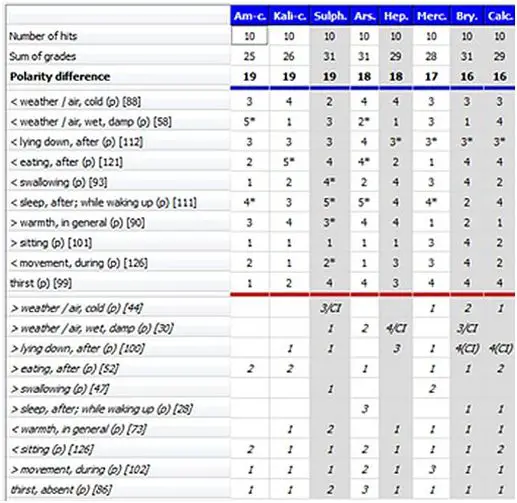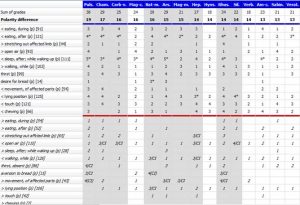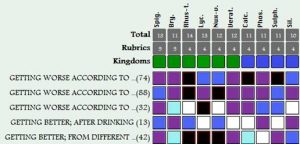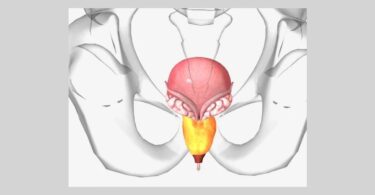For many years, we have been hearing from all the masters and legends of Homoeopathy that in order to be a successful homoeopath we should be able to find the most peculiar, rare, queer, singular symptoms in a case. However, after interacting with some students when delivering lectures, the most common question they have is, “What is a ‘peculiar symptom’? This question was bothering me for years as well. After starting my practice as a homoeopath there was always this question and burning desire to solve this question. My efforts were always directing at discovering if there a simple way to understand what a peculiar symptom is or whether forming a totality of a case can be really easy.
Here I would like to quote an unforgettable incident from my life. I was scheduled to deliver a lecture at the Pioneer Homoeopathic Medical College at Baroda. This incidentally is also the place where respected Dr. Ramanlal Patel resides and practices. I was fortunate enough to meet him on my trip. We had a good talk where he shared his wisdom. He said that most people don’t read Organon and even if they do read it, they don’t understand it. He said that in Aphorism 153 of Organon of Medicine, Hahnemann says:
“In this search for a homoeopathic specific remedy, that is to say, in this comparison of the collective symptoms of the natural disease with the list of symptoms of known medicines, in order to find among these an artificial morbific agent corresponding by similarity to the disease to be cured, the more striking, singular, uncommon and peculiar (characteristic) signs and symptoms of the case of disease are chiefly and most solely to be kept in view; for it is more particularly these that very similar ones in the list of symptoms of the selected medicine must correspond to, in order to constitute it the most suitable for effecting the cure. The more general and undefined symptoms: loss of appetite, headache, debility, restless sleep, discomfort, and so forth, demand but little attention when of that vague and indefinite character, if they cannot be more accurately described, as symptoms of such a general nature are observed in almost every disease and from almost every drug.”
Dr. Patel told us that master Hahnemann has given the answer to what are PQRS symptoms in aphorism 133.
On experiencing any particular sensation from the medicine, it is useful, indeed necessary, in order to determine the exact character of the symptom, to assume various positions while it lasts, and to observe whether, by moving the part affected, by walking in the room or the open air, by standing, sitting or lying the symptom is increased, diminished or removed, and whether it returns on again assuming the position in which it was first observed,—whether it is altered by eating or drinking, or by any other condition, or by speaking, coughing, sneezing or any other action of the body, and at the same time to note at what time of the day or night it usually occurs in the most marked manner, whereby what is peculiar to and characteristic of each symptom will become apparent.
Lesser writings – Boenninghausen
From one point of view the indicated conditions of aggravation or amelioration have a far more significant relation to the totality of the case and to its single symptoms than is usually supposed; they are never confined exclusively to one or another symptom, but, on the contrary, a correct choice of the suitable remedy depends very often chiefly upon them.
Preface – Therapeutic Pocket Book
Just as each particular symptom is made up of locality, sensation and conditions of aggravation and amelioration, so the totality is made up of general characteristics of particular symptoms plus the condition (that cannot be referred to a part) under the same general division of locality, sensation and conditions.
When I read these references, is when I realized what a characteristic symptom is. This reference for me was like finding the master key for a successful prescription. So in many of my cases where the symptoms are very clear and prominent I elicit the modalities and then using Boenninghausen’s generalization I repertorize the case. Once this is done, I utilize the sensation approach to arrive at the final remedy from the suggested remedies from the totality.
Boenninghausen believed that mental symptoms can be misleading as they are often perceived in various uncertain ways, so these symptoms can be often overlooked and incorrectly ascertained. Hence he placed great emphasis on including the state of mind only when making the final choice of remedy from the likely remedies. (Reference – polarity analysis in homoeopathy by Dr Heiner Frei)
In this article I would be sharing how the Modalities, Boenninghausen’s concept of Generalization and the Sensation Method converge in the majority of my cases leading to a reasonable percentage of successful prescriptions.
Case 1
This is a case of a 25-year-old boy suffering from chronic otitis media resulting in compromised hearing loss. He also complained of recurrent cold and cough, pain in ears and acidity.
| Location | Sensation | Modalities | Concomitants |
| Respiratory system – Nose | Blocked nose
Suffocation |
Agg: waking; lack of sleep; dust; cold food and drinks; cold air; spicy;
Amel: drinking warm drinks; open air; steam;
|
|
| Ear
Right |
Pain with white yellow discharge | Agg: waking; motion of ear; motion during; while lying; touch; sudden movement; chewing
|
|
| Gastrointestinal system
Stomach |
Retrosternal burning | Agg – spicy; while eating; tea; after meal;
Amel – cold drinks; stretching; walking; |
|
| Eructations | Burning, sour | After eating |
The following modalities were used for repertorising
2071 < eating, during (p) [91]
2072 < eating, after (p) [121]
2490 > stretching out affected limb (p) [44]
2520 > open air (p) [93]
2339 < sleep, after; while waking up (p) [111]
2524 > walking, while (p) [102]
322 thirst (p) [99]
357 desire for bread (p) [14]
2026 < movement, of affected parts (p) [54]
2189 < lying position (p) [125]
2018 < touch (p) [121]
2167 < chewing (p) [66]
On repertorising the case, using Heiner Frei’s Polarity Analysis software, we get the following remedies:
Then we understand his nature.
He describes himself as a very quiet person, always adjusting to others’ need. He will put others on priority before his own self. He does this so he can develop trust in relations. According to him, loyalty is very important in any relationship. Then he describes his dreams. He has lot of dreams. He dreams of good property, staying together, cars, partying. On asking more about these dreams he says it brings peace when all are together. Then he feels safe and secure. He feels safe guarded from all the bank money matters. All these matters are looked after by his parents. He perceives himself incapable to handle these matters.
What is your experience to deal with these matters?
Confusion
Clueless
Without direction
Needing guidance
So his experience is of being clueless, confusion and needing someone’s guidance. He sees himself as an incapable person. This incapability is a feature of the mineral kingdom. Remedies in the mineral kingdom always feel the need for something to complete themselves as they lack the capability or they fear the losing what they possess. In this case he needs someone. Remedies which feel incapable have a deep desire or a need for someone/something to help fill that incompleteness. They tend to belong to left side of periodic table. Next, we have to see what row and column he may belong to:
At this point when asked about the saddest moment of his life, he described the time when his mother passed away when he was in 8th standard. On hearing about her death, he was greatly disturbed. She was the head of the family and she used to look after him, and help him with his daily activities like filling his lunch box, ironing his clothes, helping him wear his clothes. The effect of her death was so deep that he developed malaria soon after her death.
Here, we see how knowledge of the sensation method is so vital. All these qualities which he described are about caring, love, nurturing and choice. The main aspect which he was missing in his life was the nurturing. To nurture means to be looked after, to be raised, to be loved, to be cared for. This is his individuality or his state of mind. Also in the initial part he mentions that he adjusts according to others priorities so that a trust factor is developed in a relationship. Along with nurturing, love, care, choice, we also have a feature about trust. All these are the issues of Row 3 of the periodic table.
Further into the case, we see that he is sensitive to fights and quarrels. He describes himself as a peace-loving guy. In case of a fight or a misunderstanding, he would prefer to sit and talk it out. He is also irresolute and hesitates before making a decision. He feels hot and loves eating pizza.
For more knowledge about the mineral kingdom, it is advisable to refer to Structure Vol 1 & 2 by Dr Rajan Sankaran.
Now we look at our repertory chart. The remedies that show up are Pulsatilla, Carbo veg, Magnesium carb, Natrum mur, Arsenic alb, Magnesium mur.
In aphorism 210, Hahnemann states
This holds good to such an extent, that the state of the disposition of the patient often chiefly determines the selection of the homeopathic remedy, as being a decidedly characteristic symptom which can least of all remain concealed from the accurately observing physician.
So it means that the mental state is also chiefly responsible for the selection of the homoeopathic remedy. Once we have a set of remedies after repertorization, we turn our attention to the state of mind or state of disposition of a patient. I have extended this aspect of his teaching where I use the knowledge of sensation (which in my understanding and experience is the deepest extension of state of mind) to arrive at the simillimum.
In this case, the qualities of Row 3 are very clear. The question then is which remedy to give, Natrum mur or Magnesium carb? For this, we go back to the Organon of Medicine, where in aphorism 3 Hahnemann clearly states that a physician must clearly perceive what is to be cured in the disease. When I look at his case, I get a picture that this boy is lacking nourishment – nurturing from his mother. Also we see that he describes himself as a peace loving guy, he dislikes fights and quarrels. This is a feature of Magnesium more than Natrum. Hence Magnesium carb was chosen and he was given Magnesium carb 200 twice a day for 2 days.
Follow up after 7 months of treatment
He received only 4 doses of the remedy and was otherwise on sac lac. His ear problem was almost resolved and there was no longer any discharge from the ear. Acidity was much better and he had random episodes only if he had excessive junk food. His tendency to cold and cough was also much better. He was able to eat ice cream without much bother. The sneezing in the morning on waking had disappeared. Occasionally he had blocked nose on waking but that disappeared as soon as he got out of the bed. His confusion was 50% better. He felt confident and had confidently taken some big decisions at his workplace. Overall he was much better in his ailments.
Case 2
This is a case of 35-year-old man, quite well built and 6 feet tall. He is an engineer by profession working at a very high post in his company. He was under our treatment for chronic back pain and was diagnosed as having a lumbar disc prolapse. He responded well to Nux vomica and physiotherapy. He was asked to discontinue treatment as the pain no longer existed. A few months after this, he called me with the complaint of cough which was bothering him for over a month.
When he came in, I asked him a few simple questions:
How did the cough develop – for which he had no answer. What makes the cough better and worse? The cough is worse if he talks, in an air conditioned room, and if he tries to cover his mouth with a handkerchief or hand. It was better after drinking plain water and also on having warm drinks.
His case was repertorized using the concept of grand generalization.
- < cold air
- < warm covering
- < talking
- > drinking after
- > warm drinks
(Complete Repertory, copyright @Roger van Zandvoort, from MacRepertory 8.2.01, Professional)
Remedy – Spigelia 200 twice a day for 2 days
Cough 80% better in 5 days, but there was no progress further. I repeated Spigelia 200 bd for 2 days and after 1 week he was perfectly fine.
In this case I already knew that he was on Nux vomica, which had helped his complaint. He did improve on Nux vomica and during the acute episode Spigelia covered all his symptoms and it belonged to the same family as that of Nux vomica i.e. Loganiaceae. Hence he was given Spigelia 200.
So in my practice I strive to integrate the old wisdom of Boenninghausen and his Concept of Generalization with the Sensation Method developed by Dr. Rajan Sankaran sir. Both these tools have been helping me arrive at the remedy in more than 50% of my cases. More importantly this integration is easy to practice and gives enough confidence and certainty about the remedy selected.
“Creating a new theory is not like destroying an old barn and erecting a skyscraper in its place. It is rather like climbing a mountain, gaining new and wider views, discovering unexpected connections between our starting points and its rich environment. But the point from which we started out still exists and can be seen, although it appears smaller and forms a tiny part of our broad view gained by the mastery of the obstacles on our adventurous way up.” – ALBERT EINSTEIN
About the other song:
‘the other song” International Academy of Advanced Homoeopathy’: ‘the other song’ is a world class premium medical centre which puts good health and well being at the core of an academic culture dedicated to complete patient care. Situated in Mumbai, this institute is one in its kind where a team of 35 doctors headed by Dr. Rajan Sankaran (the pioneer of the Sensation Approach in Homoeopathy) come together and practice Homoeopathy. At the Academy, the students and practitioners are trained in advanced Homoeopathic practices, using new methodologies in combination with the traditional approaches, all with the use of state-of-the-art technologies. The Academy is also a meeting point for different schools of thought in Homoeopathy, where renowned homoeopaths – national and international are invited, to share their knowledge and experience, so that there is a constant flow of ideas on a common platform.
Editors – Dr. Sneha Vyas, Dr. Ruchita Shah, the other song








